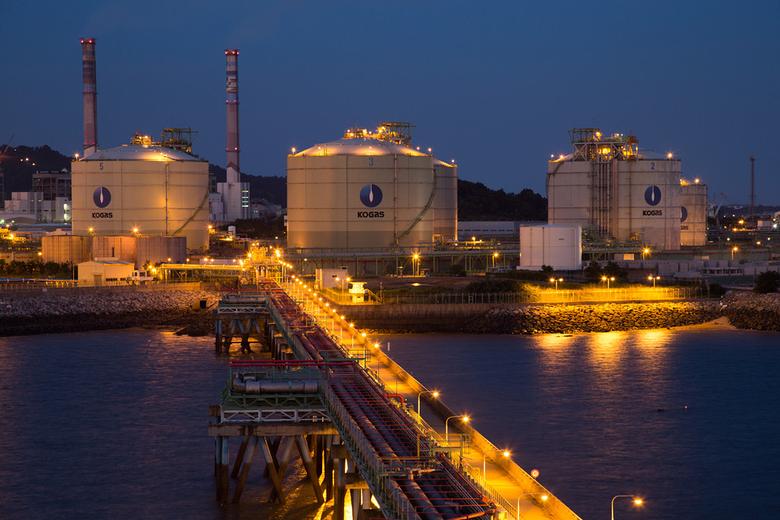
2016: OIL DEMAND UP 2%

South Korea's oil products demand is forecast to climb 2% on year to 858.6 million barrels in 2016, the country's state-run think tank said Monday.
This year, oil products demand is estimated to reach 841.9 million barrels, up 2.5% on year, the Korea Energy Economics Institute, which falls under the purview of the Ministry of Trade, Industry and Energy, said.
The country's oil demand in 2016 will be driven by jet fuel and auto fuels, with fuel oil consumption sliding, the think tank said.
In its Energy Demand Forecast, the institute said the country's jet fuel demand is expected to increase 5.5% on year to 36.2 million barrels next year, compared with 34.4 million barrels estimated for this year.
"The rise in jet fuel demand is attributable to increase in air [travel] by local and Chinese tourists," the KEEI said.
South Korea's jet fuel demand has been on the rise for the past year. For the first 10 months of this year, jet fuel demand jumped 8.9% on year to 28.81 million barrels from 26.45 million barrels in the same period last year. Total oil demand for the first 10 months, however, rose only 3.6%.
For the full year of 2014, the country consumed 31.96 million barrels of jet fuel, up 5.3% from 30.33 million barrels in 2013. Total oil demand in 2014 was down 0.5% on year at 821.46 million barrels, said KEEI.
According to the Ministry of Land, Transport and Infrastructure, the number of air passengers rose 8.5% on year to 65.69 million for the first nine months of this year, and air cargo also climbed 3.3% on year to 2.81 million mt over January-September.
The ministry said air traffic would remain firm next year on the back of low fuel prices.
The KEEI report also forecast the country's gasoil demand to rise 1.1% on year to 154.3 million barrels in 2016, from 152.7 million barrels estimated for 2015. The country consumed 144.84 million barrels of gasoil in 2014, up 1.3% from 143.02 million barrels in 2013.
Gasoline demand is forecast to climb 2.5% to 77.7 million barrels in 2016 on low retail prices, compared with 75.8 million barrels estimated for this year. The country consumed 73.47 million barrels of gasoline last year, flat from 73.42 million barrels in 2013.
Naphtha demand is forecast to increase 2.1% to 420 million barrels in 2016, compared with 411.5 million barrels estimated for 2015, according to the KEEI. But the growth is slower than an estimated 3.8% expansion this year.
The country consumed 396.34 million barrels of naphtha in 2014, up 3.1% from 384.25 million in 2013.
Demand for kerosene is forecast to rise 2.5% on year to 16.7 million barrels in 2016, from 16.3 million barrels this year, the KEEI said. LPG demand is also forecast to increase 1.7% to 88.3 million barrels next year, from 86.8 million barrels in 2015.
But demand for fuel oil is forecast to fall 2.9% to 33.5 million barrels next year, from 34.5 million barrels estimated for 2015.
The KEEI said the demand forecast is based on assumption that benchmark Dubai crude price will average at $52.1/b in 2016, down from $55.4/b in 2015.
The think tank also forecast the country's LNG consumption to fall by 12.4% to 30.5 million mt in 2016, from an estimated 34.8 million mt in 2015.
The country's LNG demand had sharply increased since 2010, but started falling in 2014 and is expected to further decline this year and 2016 due to weak demand for power generation as new coal-fired plants and nuclear reactors come online, the KEEI said.
Korea Gas Corp., which has a monopoly over domestic natural gas sales, sold 25.39 million mt of LNG over January-October this year, down 8% from a year earlier.
Kogas sold 35.17 million mt of LNG last year, down 9.1% from 2013, the first annual decline in five years.
Use of coal for power generation and nuclear power has been on the rise as costs are relatively lower compared with LNG, it said.
"Operating rates at natural gas-fired power plants have decreased to under 40% since the second half of 2014 from 60% for 2012-2013 due to increased capacity of coal-fired and nuclear power plants and economic slowdown," the report said.
"The rate is expected to further decline to under 30% in 2016, slashing LNG consumption for power generation," it said.
South Korea's reliance on LNG in its total energy mix would decrease to 13.5% in 2016, from 17% in 2014, while reliance on oil would remain unchanged at 37.3%, the KEEI said.
The country's total energy demand is forecast to grow 0.8% to 214.6 million mt of oil equivalent in 2015 and 1.6% to 218.1 mtoe in 2016.
-----
More:
LNG WILL RETURN
OIL DEMAND GROWTH
SAUDI MAY REDUCE
IRAN OIL UP 13%
LNG IMPORTS DOWN





